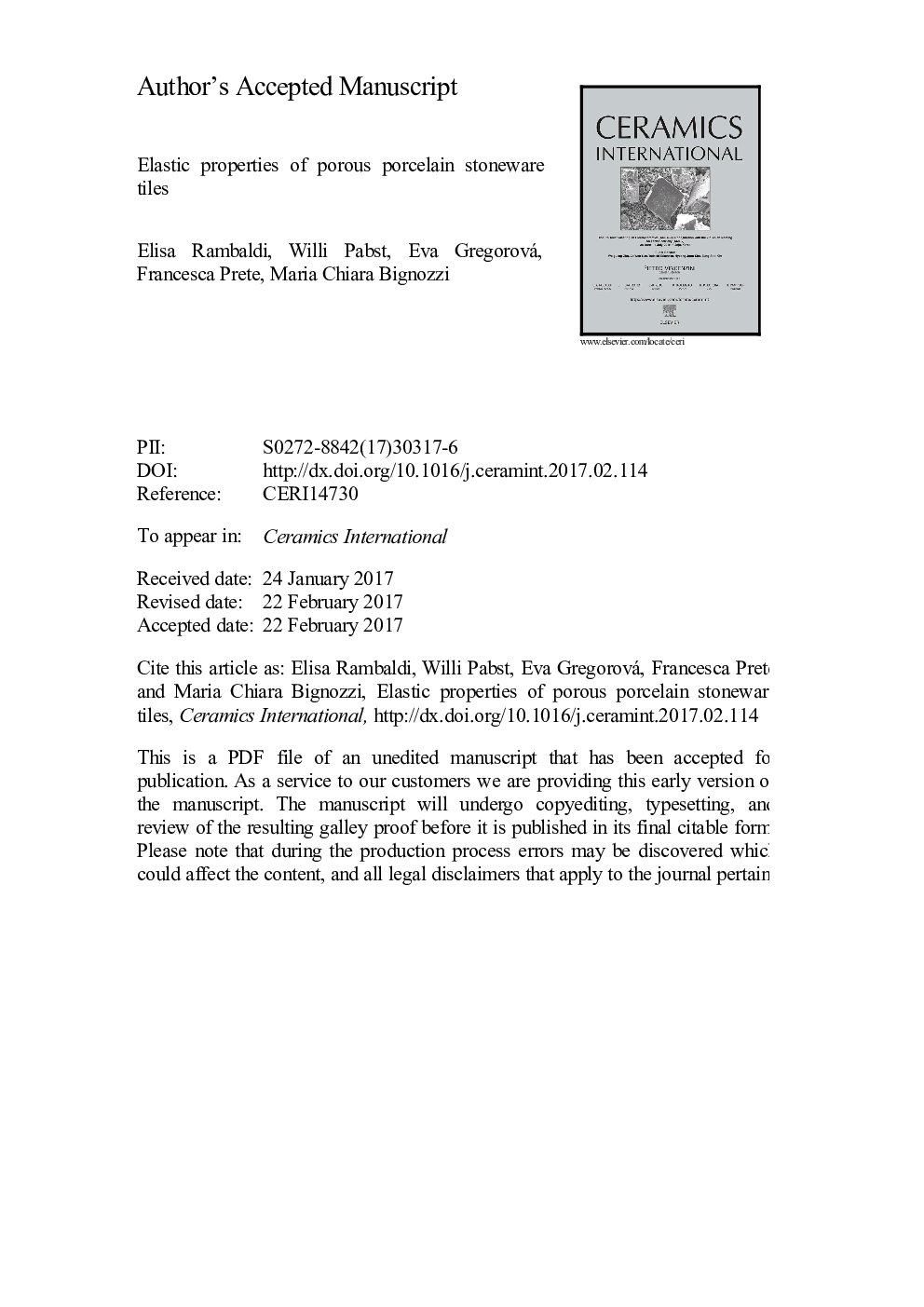| Article ID | Journal | Published Year | Pages | File Type |
|---|---|---|---|---|
| 5437933 | Ceramics International | 2017 | 17 Pages |
Abstract
Based on the quantitative XRD phase composition, elastic constants have been calculated via Voigt-Reuss-Hill averaging, and the influence of porosity has been taken into account via power-law and exponential relations. It is shown that the effective elastic constants predicted by exponential and power-law relations are in agreement with experimental values. It may be concluded that for this class of materials, in the porosity range below 14-16%, both exponential and power-law relations are helpful tools to design tiles with controlled microstructure and tailored mechanical properties.
Related Topics
Physical Sciences and Engineering
Materials Science
Ceramics and Composites
Authors
Elisa Rambaldi, Willi Pabst, Eva Gregorová, Francesca Prete, Maria Chiara Bignozzi,
